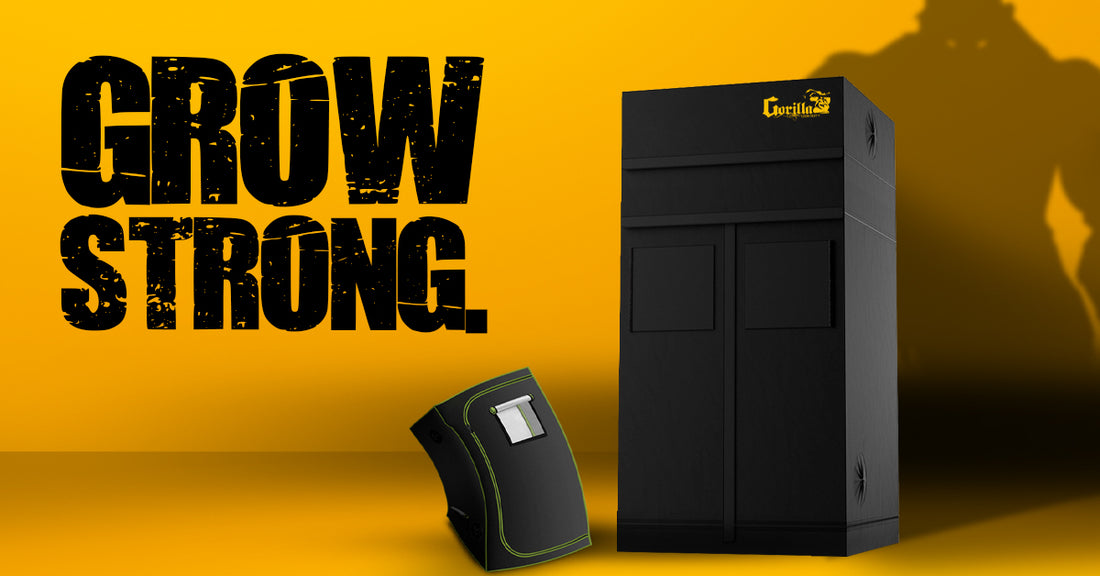
How to Control Humidity in a Grow Tent: A Complete Guide
How to Control Humidity in a Grow Tent: A Complete Guide
Introduction: The Importance of Humidity Control in a Grow Tent
Humidity is one of the most important factors in indoor gardening, especially when growing cannabis or other sensitive plants in a grow tent. Proper humidity control can make a significant difference in plant health, growth, and yields. Maintaining the right humidity levels at each stage of plant growth ensures that your plants are healthy and free from mold, mildew, and other moisture-related issues. In this guide, we’ll cover how to control humidity in a grow tent, using tips and techniques to keep your plants thriving.
1. Why Humidity Matters in a Grow Tent
Humidity refers to the amount of moisture in the air. In a grow tent, controlling humidity is essential because it directly affects how your plants absorb water, nutrients, and light. Too much or too little humidity can lead to problems like mold growth, nutrient deficiencies, or stunted growth. Here’s why humidity is crucial in a grow tent:
- Promotes Healthy Growth: The right humidity level encourages healthy growth by helping plants absorb water and nutrients through their leaves.
- Prevents Mold and Mildew: High humidity can lead to mold and mildew, which can ruin your plants and damage your grow environment.
-
Supports Proper Photosynthesis: The right humidity helps regulate transpiration, allowing plants to efficiently perform photosynthesis and produce energy.

2. Ideal Humidity Levels for Different Growth Stages
Different stages of plant growth require different humidity levels. Adjusting the humidity in your grow tent based on your plant’s life cycle is key to healthy growth and development:
2.1 Seedling Stage
During the seedling stage, plants require high humidity (65-70%) because they absorb most of their water through their leaves. High humidity encourages the seedlings to grow strong roots and stems.
2.2 Vegetative Stage
As plants enter the vegetative stage, they need slightly lower humidity levels (40-60%) to encourage root growth and prepare for flowering. Lowering the humidity helps prevent mold growth as the plants become bushier.
2.3 Flowering Stage
During the flowering stage, humidity levels should be kept between 40-50%. Keeping humidity low at this stage prevents mold and bud rot, which can damage your cannabis buds or other flowering plants.
2.4 Late Flowering Stage
In the late flowering stage, humidity should be further reduced to around 30-40%. This helps prevent mold on dense buds and encourages the plant to produce more resin, improving the quality of your harvest.
3. Tools for Monitoring and Controlling Humidity
To effectively control humidity in your grow tent, you’ll need a few essential tools. These devices help you monitor and adjust the humidity levels as needed:
3.1 Hygrometer
A hygrometer is a device that measures the relative humidity in your grow tent. Place it at plant canopy level to get accurate readings of the humidity around your plants. Digital hygrometers often come with built-in thermometers, allowing you to monitor both temperature and humidity.
3.2 Humidifier
If your grow tent’s humidity is too low, you can use a humidifier to increase the moisture in the air. Humidifiers release mist into the grow tent, helping to maintain ideal humidity levels, especially during the seedling and vegetative stages.
3.3 Dehumidifier
On the other hand, if your grow tent’s humidity is too high, a dehumidifier can help lower it by removing moisture from the air. This is particularly useful during the flowering stage when low humidity is crucial to prevent mold and mildew.
3.4 Exhaust Fan
An exhaust fan is essential for controlling both temperature and humidity. By pulling hot, humid air out of the grow tent and replacing it with fresh, cooler air, an exhaust fan helps maintain a stable environment.
3.5 Oscillating Fans
Oscillating fans improve air circulation inside the grow tent, ensuring even distribution of humidity and preventing pockets of stale air. Good airflow also reduces the risk of mold and helps plants grow strong stems.
4. How to Increase Humidity in a Grow Tent
If the humidity in your grow tent is too low, here are a few methods to raise it:
- Use a Humidifier: A humidifier is the most effective way to increase humidity in a grow tent. Set the humidifier to the desired level, and it will release moisture until the air reaches the proper humidity.
- Misting the Plants: Spraying your plants lightly with water can temporarily raise humidity, but it’s not a long-term solution. Use this method carefully to avoid overwatering your plants.
- Water Trays: Place trays of water inside the grow tent. As the water evaporates, it will increase the humidity in the tent. You can add small pebbles to the trays to slow down evaporation and make this method more effective.
- Reduce Fan Speed: Reducing the speed of your exhaust fan can help retain more moisture in the grow tent, raising the humidity level.
5. How to Lower Humidity in a Grow Tent
High humidity can lead to mold and bud rot, especially during the flowering stage. Here’s how to lower humidity in a grow tent:
- Use a Dehumidifier: A dehumidifier is the most reliable way to reduce humidity. Set the dehumidifier to your target humidity level, and it will remove excess moisture from the air.
- Increase Ventilation: Improving ventilation by adding more exhaust fans or increasing fan speed can help remove humid air from the grow tent. Ensure your grow tent has proper intake and exhaust airflow.
- Water Plants Carefully: Overwatering can raise the humidity inside your grow tent. Water your plants early in the day to give them time to absorb the water before the humidity rises overnight.
- Use Silica Gel Packs: Placing silica gel packs in your grow tent can help absorb excess moisture from the air. While not as effective as a dehumidifier, they can be useful for small humidity adjustments.
6. Maintaining Humidity During Different Seasons
Controlling humidity in a grow tent can be challenging, especially with seasonal changes in the environment. Here are some tips for managing humidity during different seasons:
6.1 Winter
In colder months, the air tends to be drier, which can lower the humidity inside your grow tent. Use a humidifier to raise the humidity levels and monitor them closely with a hygrometer.
6.2 Summer
In hot, humid conditions, you’ll need to focus on reducing humidity in your grow tent. Run an exhaust fan, use a dehumidifier, and make sure your grow tent has proper airflow to keep humidity levels in check.
Conclusion: Achieving Optimal Humidity for Healthy Growth
Maintaining the correct humidity level in your grow tent is essential for healthy plant growth, especially when cultivating cannabis. Whether you’re dealing with low humidity during the seedling stage or high humidity during flowering, having the right tools and techniques can help you keep the environment inside your grow tent just right. By using humidifiers, dehumidifiers, fans, and hygrometers, you can control humidity effectively and ensure a successful grow every time.
Frequently Asked Questions
- Can I use a regular home dehumidifier in my grow tent? Yes, but make sure the dehumidifier is appropriately sized for your grow tent to avoid over-drying the air.
- What’s the ideal humidity for drying cannabis? The ideal humidity for drying cannabis is between 45-55% to ensure slow and even drying without the risk of mold.
- How often should I check humidity levels in my grow tent? It’s a good idea to check humidity levels at least once a day, especially during the flowering stage when mold is a concern.
